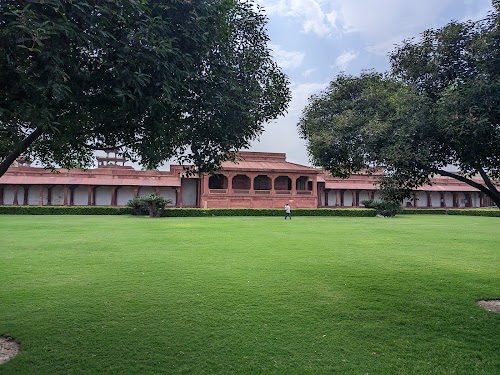
Diwan-i-Aam
Fatehpur Sikri, India
- Capture photographs of the historic structure.
- Explore the architectural design.
- Imagine courtly life during Akbar's reign.
- Learn about Mughal-era governance.
Known for:
Description:
Diwan-i-Aam, or the Hall of Public Audience, is a key structure within the Fatehpur Sikri complex. This grand hall served as a space where the Mughal Emperor Akbar addressed the common people, heard their grievances, and dispensed justice. Its architecture is characterized by a large rectangular courtyard, surrounded by pillared verandas. The emperor would sit on an elevated platform, allowing him to be visible to everyone present. The Diwan-i-Aam embodies the Mughal ideal of accessible governance, where the ruler was directly connected to his subjects. It's a must-see for understanding the Mughal administration and social structure.
History:
Constructed during the reign of Emperor Akbar in the late 16th century, Diwan-i-Aam was an integral part of his vision for Fatehpur Sikri as a new capital city. Akbar, known for his progressive policies and interest in connecting with his subjects, designed this hall to be a place of direct interaction. Here, he would listen to petitions, resolve disputes, and conduct state affairs in public view. The hall's construction reflects the syncretic architectural style of the Mughal era, blending Persian, Islamic, and Indian elements. After Akbar's death and the subsequent abandonment of Fatehpur Sikri, the Diwan-i-Aam remained a testament to his reign and his commitment to public engagement.